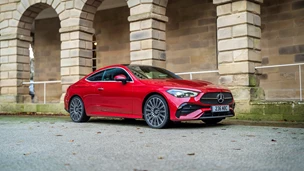Along with such diverse machines as the Skoda Fabia and the Mitsubishi Lancer Evo VII, the Peugeot 307 SW has, according to our log reports, been one of the most commonly searched-for models on CARkeys. Clearly there is a lot of interest in this car among internet users, and it also seems to be reflected out there in the real world, to judge by the number of people I found poking around the test car every time I came back to its parking space after doing the day's shopping.In some ways the sense of public anticipation about the SW is surprising, as the basic concept is not all that new. Using the floorpan of the 307 hatchback as its starting point, Peugeot has created a mini-MPV which is intended to feel like an ordinary car (as explicitly stated by the manufacturer - we'll come back to that later) but can also carry either seven people or a lot of luggage.From the front seats it seems very large, a mini-MPV without much in the way of mini-ness. That's because the limits of the cockpit, in this part of the car anyway, are a long way off. There is a lot of headroom, and the windscreen is well ahead of the driver.If you venture behind the centreline, though, you quickly realise the limitations involved in trying to make a big car out of a small one. There is room for three people in what would conventionally be thought of as the "rear", but since the 307 isn't particularly wide they need to be fairly small people if they are going to be fully comfortable. The passengers in the right or left seats are very close to the edge, and as a six foot three adult I think I'd spend a lot of journey time unintentionally banging my head against the grab handle.The seven-seat option is not available as standard - you have to buy the two rearmost seats from a dealer, at a cost of £165 each. Because of the height limitations back there, these are mounted on the floor, and for that reason offer so little legroom that they can only be considered as child seats, even though they are more or less the same size as the ones a row ahead. Fitting seven adults into a Honda Stream, to take one obvious rival as a comparison, is a bit of a squeeze, but the thing can be done. Not so in the Peugeot.If you do carry seven people there is no room for any sizeable luggage whatever, though I'm not as concerned about this as some writers have been in the past when talking about MPVs in general. A vehicle which will carry seven people and all their bags is a bus, not a car. The SW does have a great deal of promise, though, as a two-seater with vast carrying capacity if you remove the seats you don't need.The two-litre petrol engine as fitted to the test car is pretty strong (138bhp from that capacity puts it into warm-hatch territory), and although it has a lot of weight to haul around it does give the SW quite reasonable performance as long as you're prepared to use the revs when necessary. Peugeot reckons that petrol engines are involved in only 34% of UK sales, the remaining two-thirds being accounted for by the very capable diesel units.Peugeot also makes great claims for the 307's road behaviour. Apparently part of the design brief was that "there must be no dilution of the 307 hatchback's acclaimed driving characteristics and dynamic ability."Well, I'm sorry, but there is. Compared with the hatchback it is very sluggish, which would seem to be an inevitable consequence of the extra size and weight but for the fact that the aforementioned Honda has already shown that mini-MPVs can have positively perky handling.Nobody would buy an SW with the intention of using it on track days, you say? Fair point. Its road manners, then, are basically fine, thanks to a smooth ride combined with some of the best noise suppression I've ever come across - most of the time you'd hardly think the engine was running at all, even when you're pushing on quite hard.My only criticism about the ride is that, while the SW smooths out large undulations effortlessly, it seems unable to suppress the effects of very small bumps in the road. The overall effect - and I know this will sound bizarre, but it's exactly the image that came to mind at the time - is of driving through lumpy custard.The SW is a smart-looking addition to the mini-MPV market (more so in light colours than dark ones), and worth a look if (a) you're not concerned about the driving experience and (b) you need to transport either luggage or small people, rather than adults.Second opinion: What we have here is a car obviously intended more for "motoring" than for "driving", if you use the old-style definitions of these two words. But that's not necessarily a criticism. I'd really enjoy taking one down the motorways to the South of France (please . . .) because of the smooth, quiet and effortless way it eats up the miles. Anyway, who'd think of an SW as a sports estate? While it looks very stylish, and I'm still in love with the instrument design, a car of this overall size has to be a compromise when it comes to cramming in large persons and/or their luggage, although the six-seat option might be well worth considering. But there's that handsome appearance, the relaxed long-distance cruising - oh, dash it, I'll give this car the nod, while appreciating that the HDi turbo diesels have a definite appeal too. Ross Finlay. Engine 1997cc, 4 cylinders Power 138bhp Fuel/CO2 34.0mpg / 194g/km Acceleration 0-62mph: 10.5 seconds Top speed 124mph Price £15,260 Details correct at publication date

Our Rating



